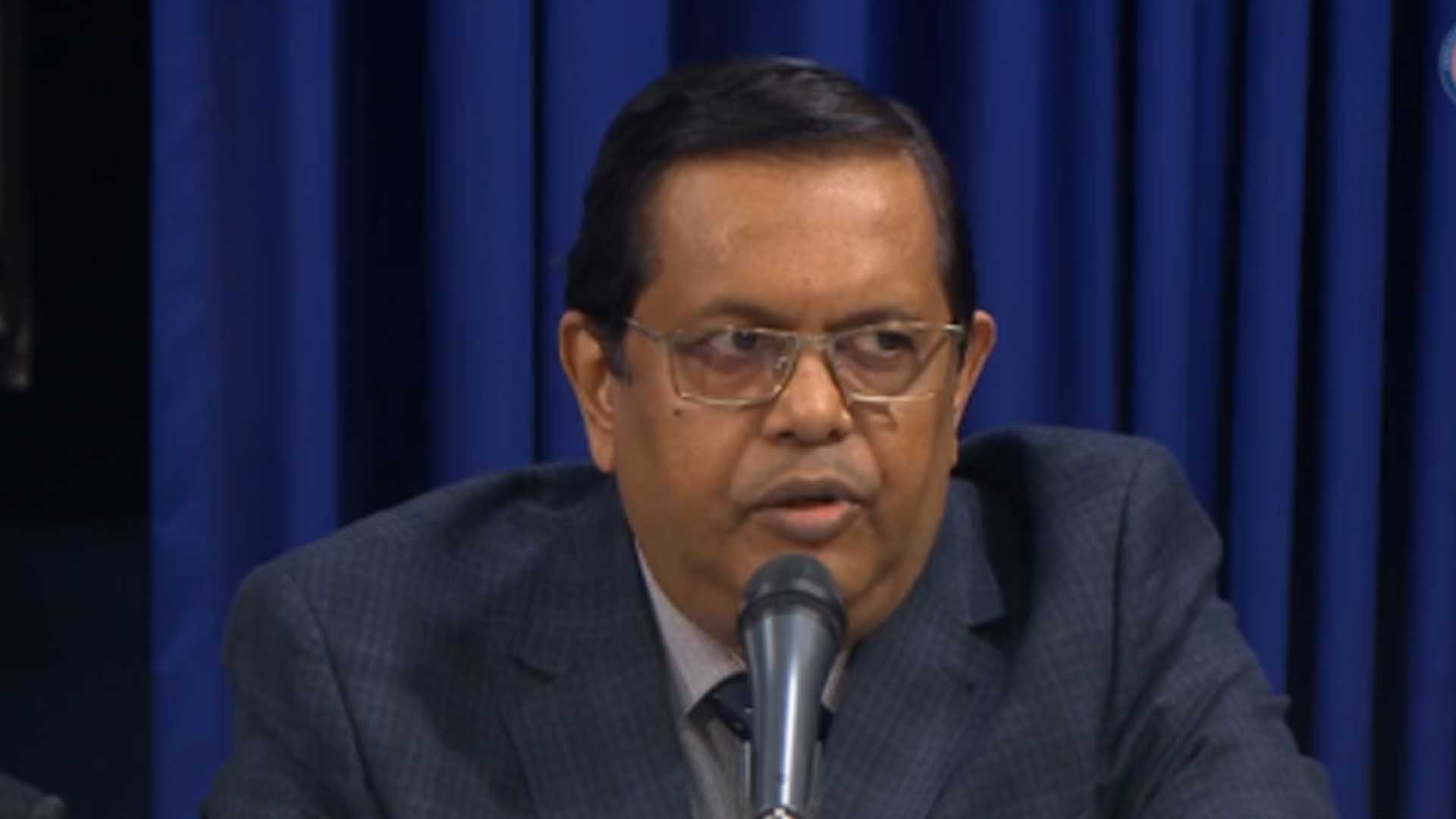Amid criticism over the Philippine government’s efforts to prevent the spread of the novel coronavirus (2019-nCoV) across the country, the World Health Organization (WHO) thinks the government is doing a good job responding to the “evolving situation.”
“We are satisfied so far with the measures being implemented by the government of the Philippines,” Dr. Rabindra Abeyasinghe, WHO Representatives in the Philippines, said in a Laging Handa press briefing in Malacañang on Monday.
“WHO commends their [sic] actions taken by the Philippine Government to strengthen its preparedness, to build capacity to detect cases,” he added.
On January 29, Health Secretary Francisco Duque III bared that the Philippines has its own capability to detect 2019-nCoV within 48 hours.
Duque said the Japanese counterpart of the Research Institute for Tropical Medicine (RITM) gave the RNA (ribonucleic acid) primer to be used for confirmatory testing of the virus.
With this development, the turnaround time will be cut by 50 percent since the acquisition of the primer would eliminate the need to consult Australian experts.
Abeyasinghe explained the Philippine government has been implementing the “most stringent measures” in relation to the relative risk and the pattern of movement of people going in and out of the country.
“I believe that the Philippine government has been responding to an evolving situation,” Abeyasinghe said.
“With the emergency of disease and the emergence of more information, the government response has been proactively strengthened,” he added.
He assured that the Philippine government is working very closely with the WHO as new evidence emerges and after the nCoV outbreak was declared as a public health emergency of international concern.
“WHO continues to work together with the Department of Health (DOH)–Philippines and the Philippine Government to increase its preparedness and response capacities to deal with this outbreak,” Abeyasinghe said.
“We continue to work with them to increase their preparedness in case there is evidence of local transmission,” he added.
Currently, he said there are no reports of any confirmed local transmission.
He also expressed confidence that the outbreak can be controlled and prevented from spreading across the country.
“WHO is confident that at this point of time, there is no community spread of the disease as per evidence that is currently available within the Philippines,” Abeyasinghe said.
He also reiterated that the two confirmed 2019-nCoV cases that have been reported in the Philippines were both from travelers who originated from Wuhan and traveled with early signs of the disease.
Possible nCoV treatment
Following a report made by Thailand’s health ministry that a Chinese woman infected with the virus showed a dramatic improvement after being treated with a cocktail of anti-virals used to treat flu and HIV, Abeyasinghe pointed out that the improvement of one patient “does not constitute evidence.”
“WHO will work more closely with the authorities in Thailand, but also we are continuing to work with the authorities in China and with other research institutions to build evidence of what practices should be adopted by affected countries to improve case management, to prevent of the transmission and no sooner there is clear evidence of what works, WHO will share that,” he said.
In the meantime, he said the WHO has shared interim guidance with member-states on how to prevent and control infection, how to manage cases and how to do diagnosis of suspected patients through laboratory testing.
“We need to recognize that this is an evolving situation, it’s a new disease and WHO remains committed to working together with the global research community to generate that evidence and share it with Member States when available,” he added.
No need for masks
Since there is no community transmission of 2019-nCoV, RITM Director Dr. Celia Carlos said the institute is not recommending the use of surgical face masks to general public who do not have respiratory symptoms.
However, she reiterated the importance of taking precautionary measures such as the washing of hands, avoiding close contact with anyone with flu-like symptoms or colds, and avoiding unprotected contact with live, wild or farm animals.
Returning Filipinos coming from China and its special administrative regions namely Hong Kong and Macau without symptoms of 2019-nCoV are required to undergo a 14-day self-quarantine in their own homes.
Meanwhile, those experiencing symptoms were asked to seek immediate medical treatment.
Those under self-quarantine will also be monitored by barangay health personnel until the quarantine period ends, according to Interior Secretary Eduardo Año.
Earlier, Defense Secretary Delfin Lorenzana bared that the DOH is eyeing the drug rehabilitation center in Fort Magsaysay, Nueva Ecija as possible quarantine area for Filipino workers returning from Wuhan, China.
Fort Magsaysay can accommodate up to 10,000 people, the DOH said.
On Saturday, the country’s second 2019-nCoV patient, a 44-year-old Chinese male from Wuhan, China, died. He was the first reported death due to the deadly virus outside of China.
He was the companion of the 38-year-old woman from Wuhan, China who was the first confirmed case of nCoV in the country.
Carlos explained that the two 2019-nCoV cases were not tested and released at the same time because the symptoms of the male patient, who was “not as ill” as his companion, progressed subsequently.
The 2019-nCoV, which originated in Wuhan in Hubei province, China, has infected over 17,000 people and killed around 362 people.
It has been reported in 23 countries, several of those countries also reporting local transmission although most of the cases have reported had a travel history to Wuhan. (PNA)







